Search
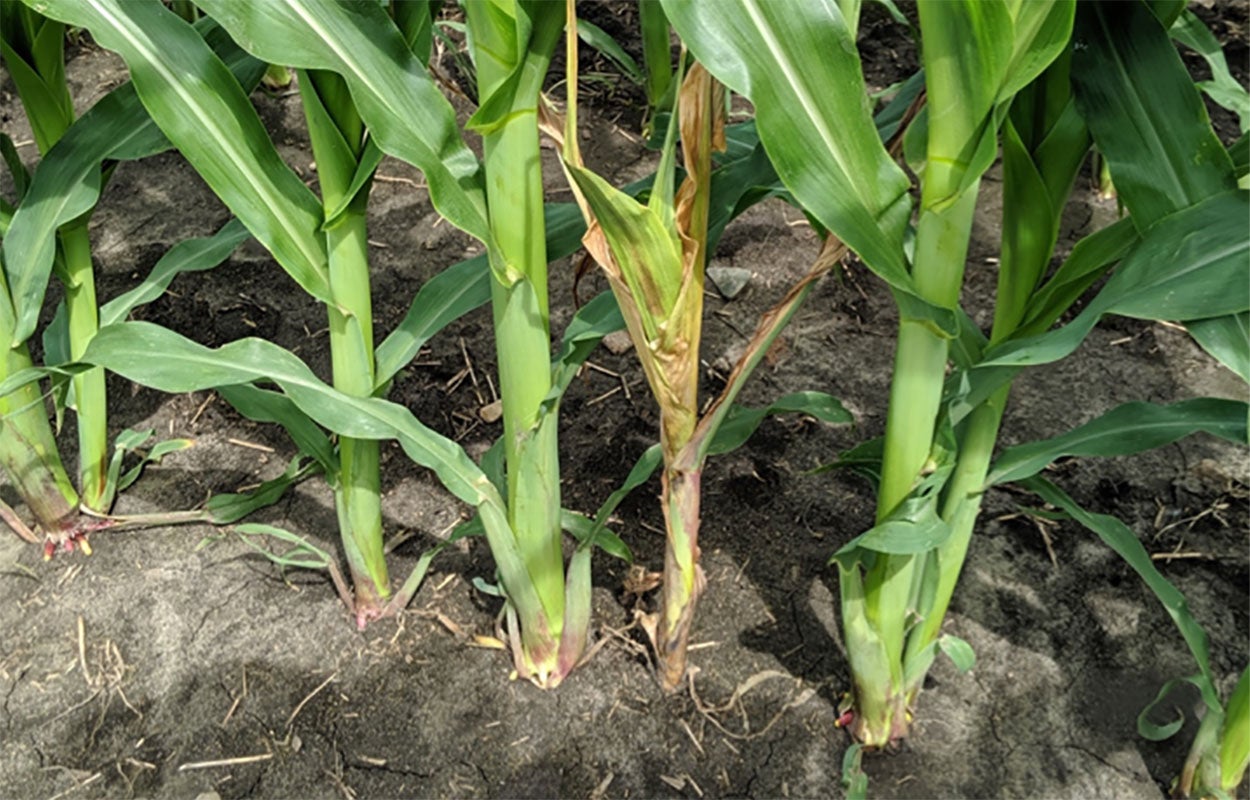
Fusarium Root and Crown Rot Developing in Corn
A few corn fields scouted in Brookings County were found with Fusarium root rot at low levels. Infected plants were wilting and upon splitting of the lower nodes revealed brown discoloration of the pith. Root and crown rots developing in corn after the seedling stage are usually caused by Fusarium spp. and can be enhanced by injury to the roots or crown, mainly by insect feeding.
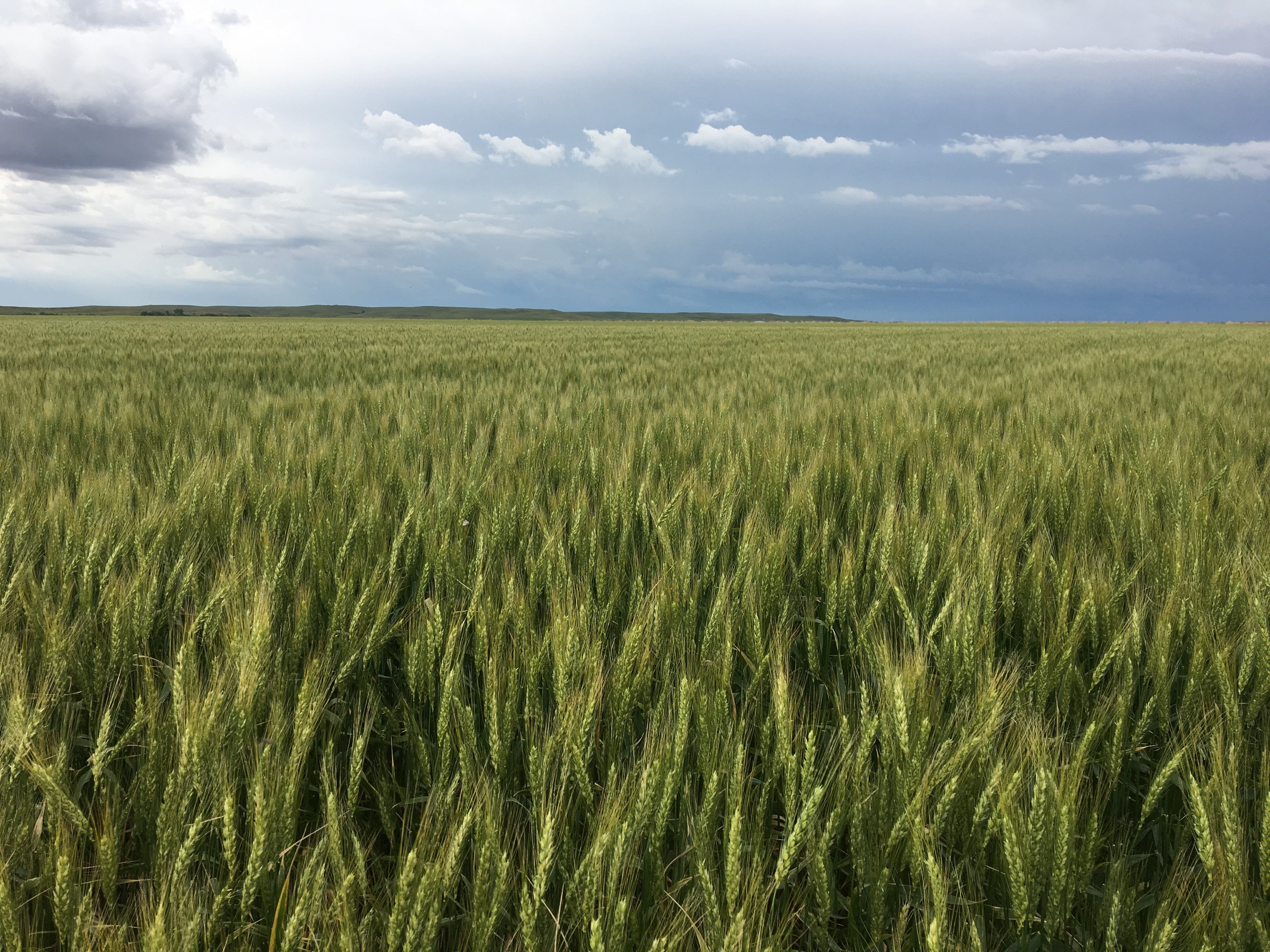
Small Grain Pre-Harvest Options
Consider pre-harvest herbicide applications in crop ground planted with small grains that are grown for seed or forage. Dense weed populations may inhibit harvest, therefore proper control of them early in the growing season is best.
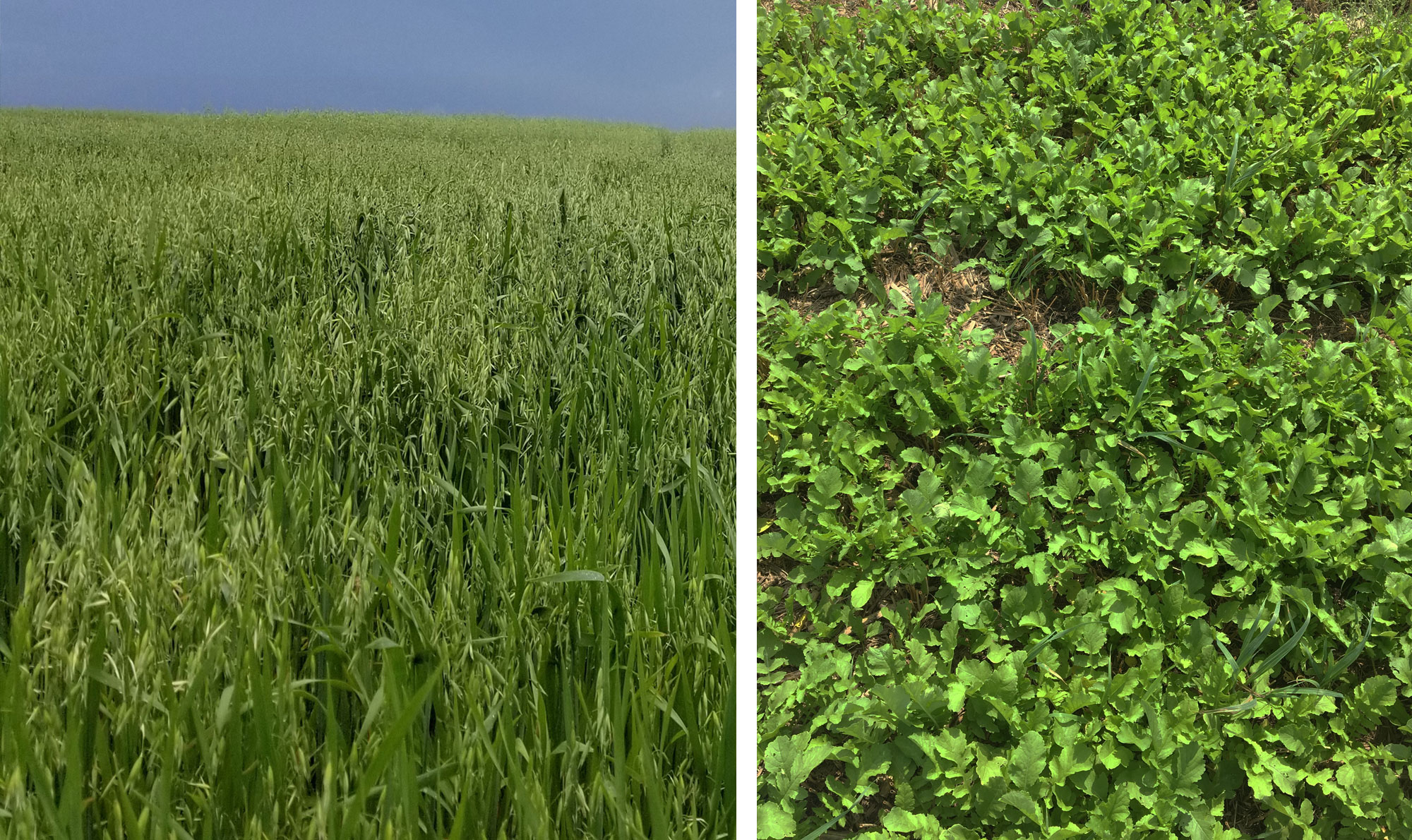
Herbicide Interactions With Cover Crops After Oats
After oats have been harvested, options exist to keep a living root in the soil. This can be done through growing cover crops. In 2018 an on-farm trial was preformed near Salem, South Dakota to observe how cover crops grown after oats would germinate after common herbicides had been applied.
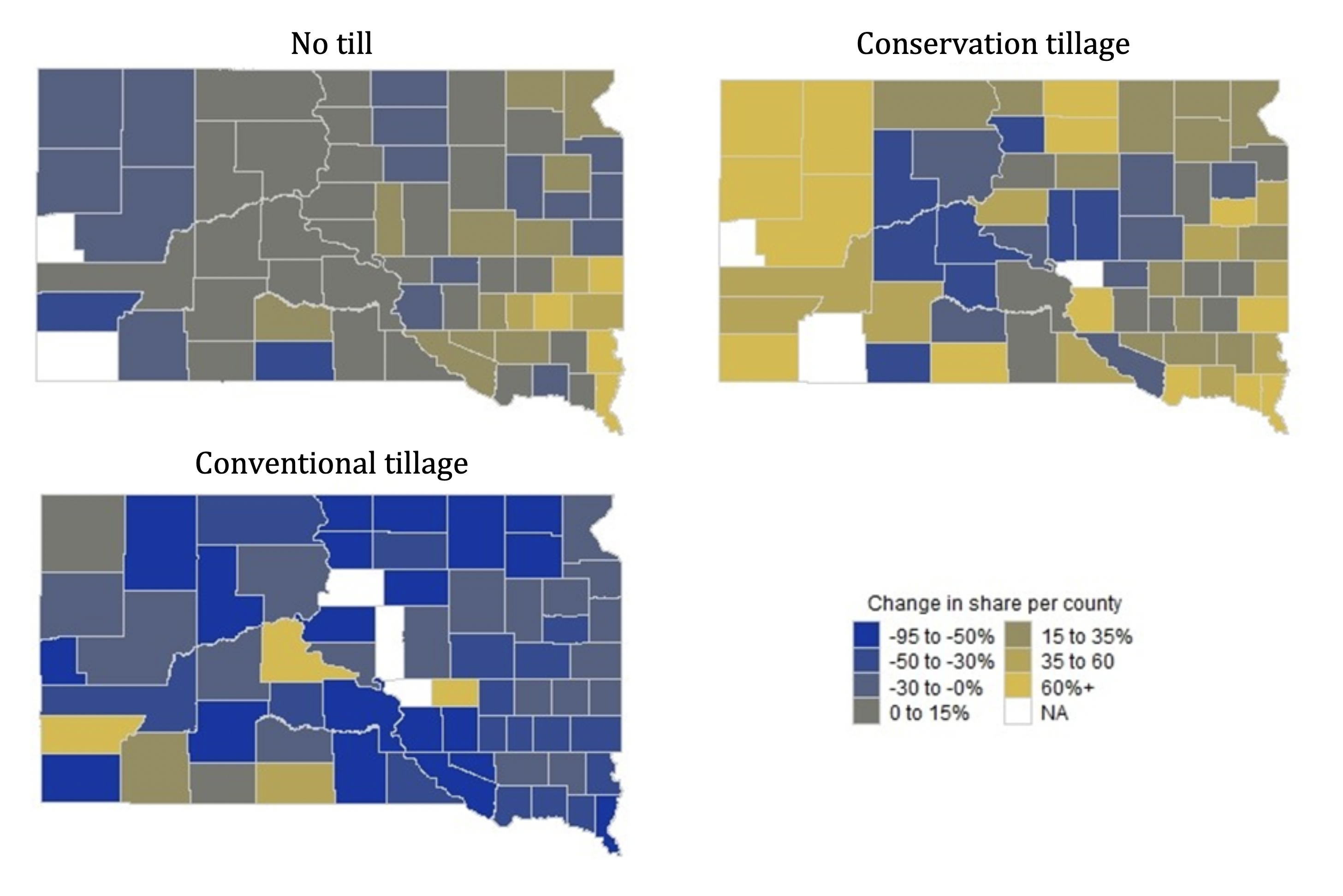
Soil Conservation Practice Adoption Status at the S.D. County Level: 2012–2017
An increasing number of farmers across the state of South Dakota have adopted different soil conservation practices such as no-till, conservation tillage and cover crops. Over time, these practices play significant roles in improving soil health and increasing soil resilience towards extreme weather conditions.
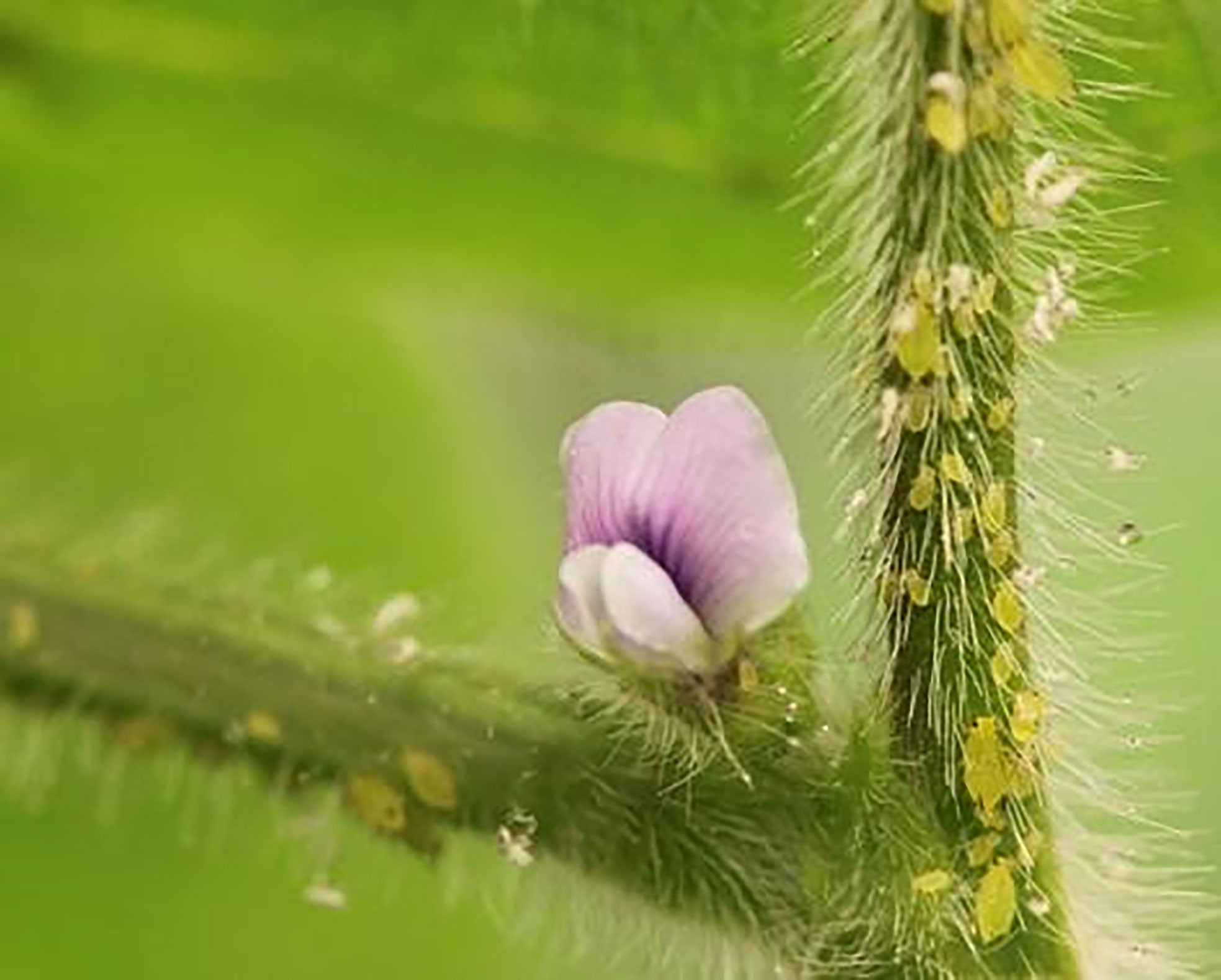
Small Populations of Soybean Aphids Observed in South Dakota
While scouting fields last week, we observed small populations of soybean aphids near Volga, South Dakota. Although no sustained populations were observed, it is a good reminder that soybean aphid scouting should occur throughout the growing season to prevent population outbreaks.
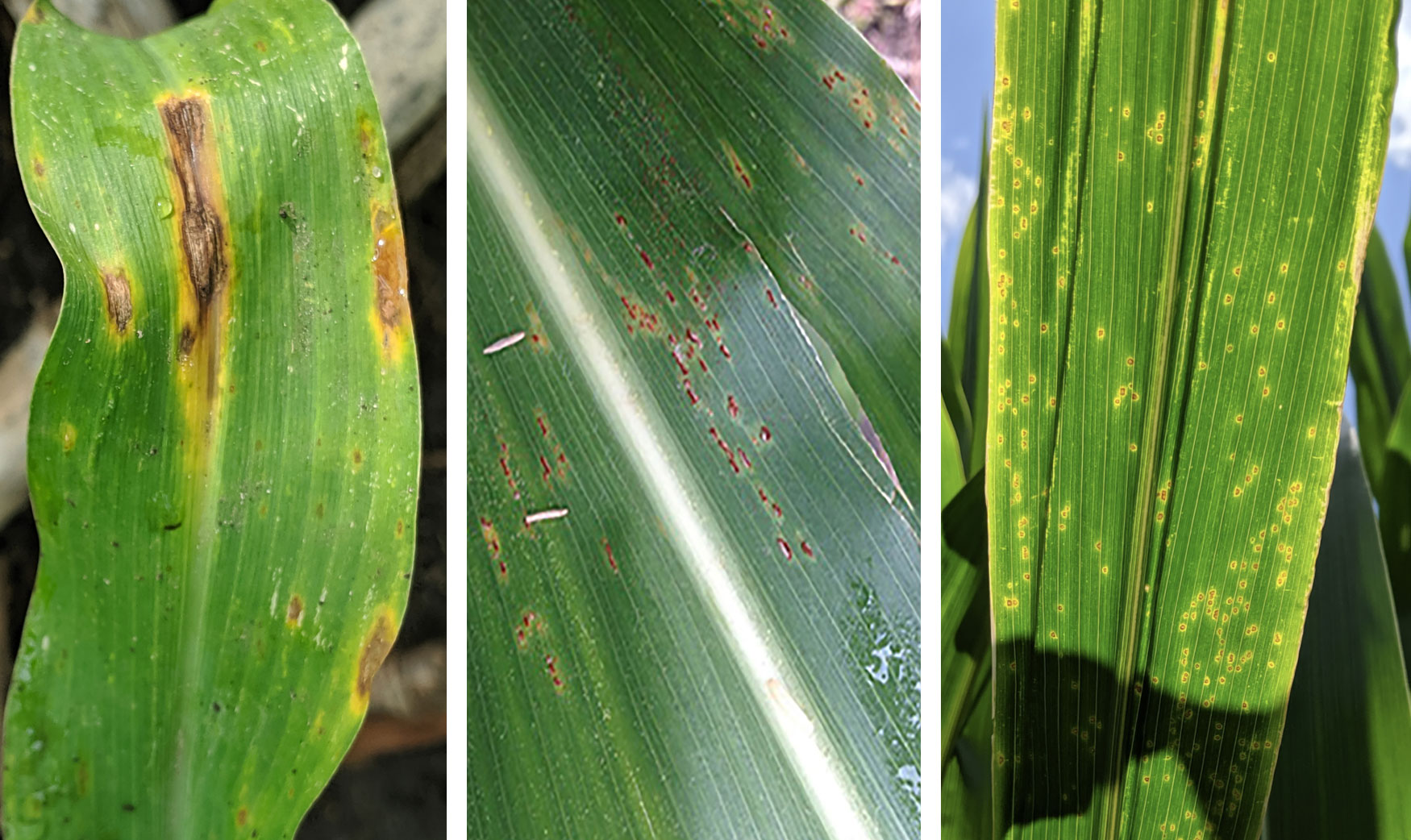
Is a Fungicide Needed for Developing Corn Diseases?
Corn is starting to tassel in several locations across the state. This is also the growth stage when a fungicide may be applied to control fungal leaf diseases. Diseases currently starting to develop are: anthracnose leaf blight, common rust and eyespot.
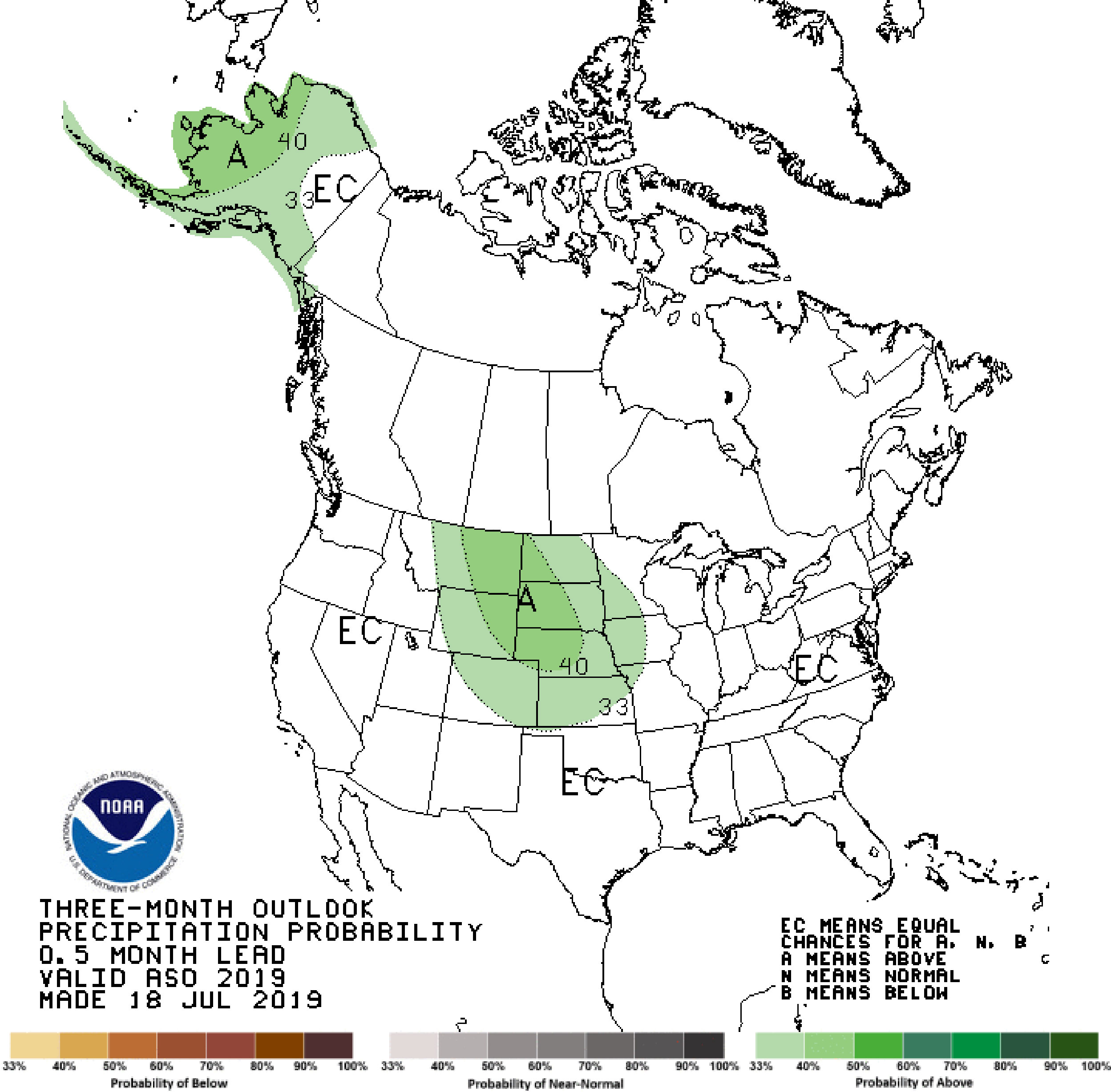
Wet Conditions Likely Into Fall Season
Many locations in South Dakota have already received as much precipitation this year as they do in an entire average year. The latest climate outlook from NOAA’s Climate Prediction Center shows increased chances of wetter than average conditions to continue into the fall season.
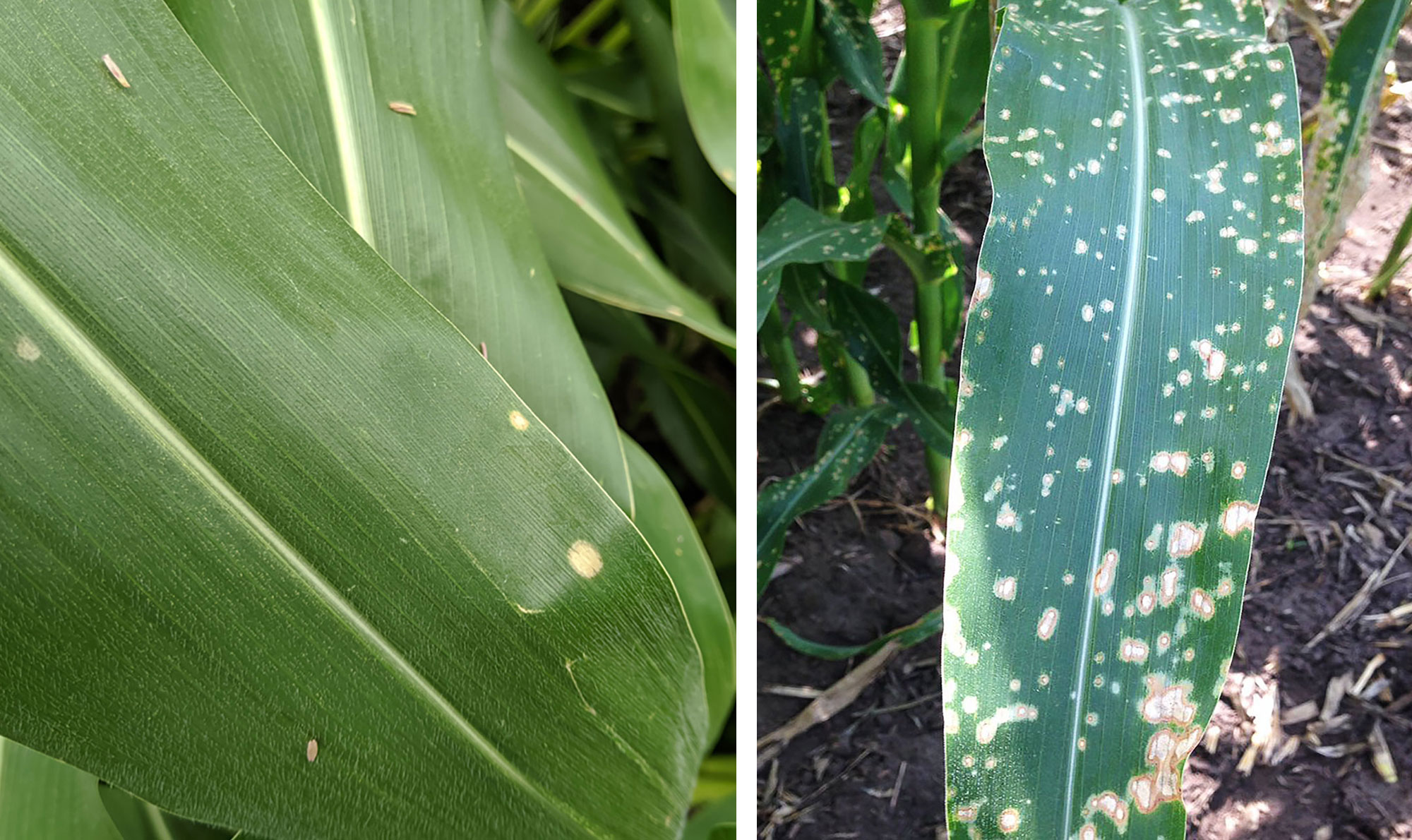
Holcus Spot or Plant Injury?
Is your corn developing spots? Corn fields have been found with what appears to be Holcus spot, a bacterial disease. Upon further investigations, the leaves were found to be negative for any plant pathogens.
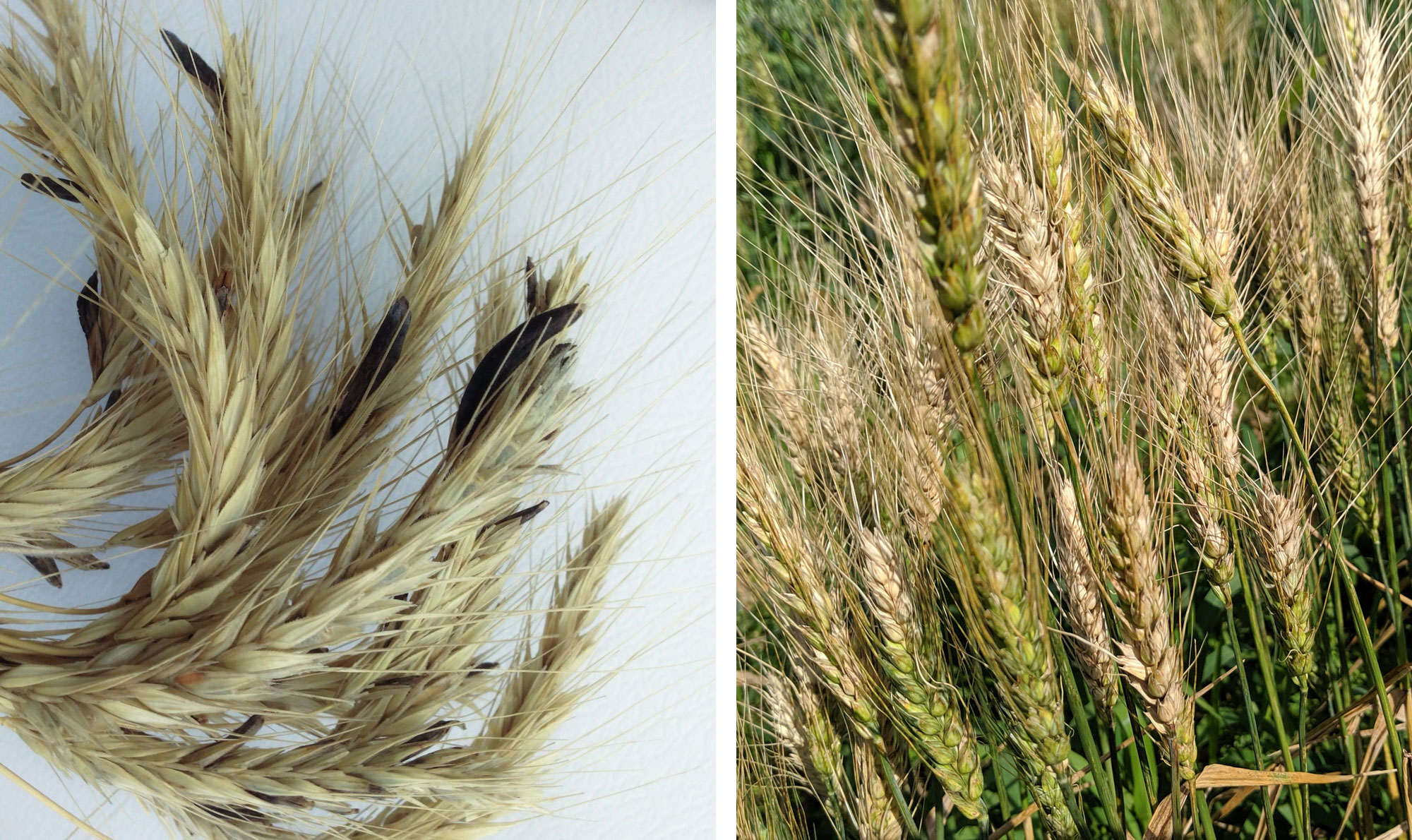
Assess Your Fields for Ergot and Fusarium Head Blight Before Harvest
The 2019 wheat harvest is well underway in South Dakota, with many acres of winter and much of the spring wheat crop left to harvest. To date, reports on yield and quality have been variable, depending on when the crop was seeded, weather conditions at important growth stages (such as flowering and grain fill) and disease pressure throughout the season.
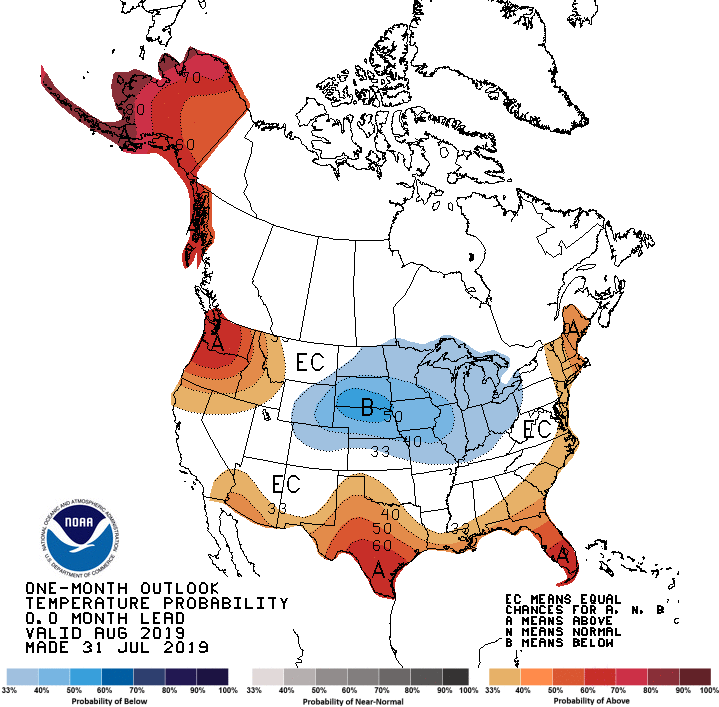
August 2019 Climate Outlook: Cool and Wet
According to the latest climate outlook update, odds are favoring that August 2019 will be cooler than average. The update was released by NOAA’s Climate Prediction Center on July 31, 2019.